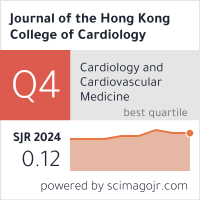Abstract
Background: Severe angina is significant risk factor in patients undergoing the abdominal nonvascular surgery. Aims: The aim of our study was to prove that the incidence of expected perioperative cardiac complications was significantly higher in the group of severe than in the group of mild angina. Methods: Our prospective observational clinical study included the group of 78 consecutive patients with angiographically verified coronary arterial disease who had angina. Coronary patients underwent open abdominal nonvascular surgery during general anesthesia in University Clinical Center. The patients were classified into stratification subgroups, using the "Canadian Cardiovascular Society" grading of the angina. This subgroups were compared in relation to frequency of perioperative cardiac complications. During operation, and in the following 72 postoperative hours, the patients were monitored by continuous ST-T segment recording. Twelve-lead electrocardiography was performed immediately after the surgery, and on postoperative days 1, 2 and 7 as well as one day before discharge. Cardiac biomarkers were evaluated at 6 hours, 24 hours and 96 hours following the surgery. A non-parametrical Pearson's hi-square test using the contingency tables was used to analyze the data from two subgroups with the level of significance set at 95% (p < 0.05). Results: Significant difference of the the incidence of perioperative cardiac death was found between two evaluated stratification subgroups 15.0% (severe angina) vs 0.0% (mild angina)(p < 0.01). Conclusions: We found high statistical significance of the incidence of perioperative cardiac death between the subgroup of severe angina and the subgroup of mild angina in patients having undergone open abdominal nonvascular surgery during general anesthesia.
Recommended Citation
Vesna M Karapandzic, M Marija V Boricic, Srbislav M Knezevic, Vitomir I Rankovic, Severe Angina is Significant Risk Factor in Patients Undergoing the Abdominal Nonvascular Surgery Journal of the Hong Kong College of Cardiology 2009;17(1) https://doi.org/10.55503/2790-6744.1086
Creative Commons License

This work is licensed under a Creative Commons Attribution-Noncommercial-No Derivative Works 4.0 License.



